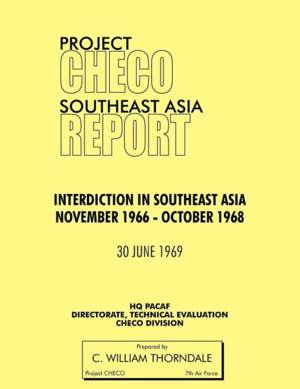
- Retrait gratuit dans votre magasin Club
- 7.000.000 titres dans notre catalogue
- Payer en toute sécurité
- Toujours un magasin près de chez vous
- Retrait gratuit dans votre magasin Club
- 7.000.000 titres dans notre catalogue
- Payer en toute sécurité
- Toujours un magasin près de chez vous
Project Checo Southeast Asia Study
Interdiction in Southeast Asia, November 1966 - October 1968
C W Thorndale, Hq Pacaf Project Checo
Livre broché | Anglais
48,45 €
+ 96 points
Description
High quality reprint of a recently declassified 1969 study. The War in Southeast Asia in 1967 and 1968 comprised an astounding complexity of conventional and unconventional wars, political and geographic boundaries, Rules of Engagement, areas of operation, command responsibilities, wet and dry seasons, sanctuaries for both sides, and a terrain of mountains, jungles, and flood plains From the Red Chinese Border to the Mekong Delta, the enemy supply lines ran this tangled natural and man-made gauntlet--attacked the whole way by the air interdiction campaign. In North Vietnam, the railroads and bridges on the Joint Chiefs of Staff (JCS) target lists were the prime interdiction targets. Interdiction operations in Laos meant attacking the trucks rolling down the Ho Chi Minh Trail, closing the roads with air strikes, and bombing the supplies stockpiled off the Trail. Within South Vietnam, all airstrikes were nominally considered close air support for ground forces Seventh Air Force operations against in-country enemy roads only slowly became an interdiction campaign. The Cambodian government's refusal to sanction U.S. air strikes within its borders put U.S. activities there within the scope of unconventional warfare and outside the conventional interdiction efforts. Despite many natural and man-made variables, "air interdiction" had certain common characteristics, particular tactics, and specific munitions For instance, the Air Force experience in Korea was repeated in SEA when the enemy's heavy antiaircraft artillery (AAA) degraded accurate bombing of roads and railroads. Also, few efficient area denial weapons existed to prevent rapid enemy repair of the bomb cuts made on the roadbeds. This proved true against roads running through Laos into South Vietnam, as well as against railroads around Hanoi.
Spécifications
Parties prenantes
- Auteur(s) :
- Editeur:
Contenu
- Nombre de pages :
- 232
- Langue:
- Anglais
Caractéristiques
- EAN:
- 9781780398068
- Date de parution :
- 17-05-12
- Format:
- Livre broché
- Format numérique:
- Trade paperback (VS)
- Dimensions :
- 216 mm x 279 mm
- Poids :
- 548 g







